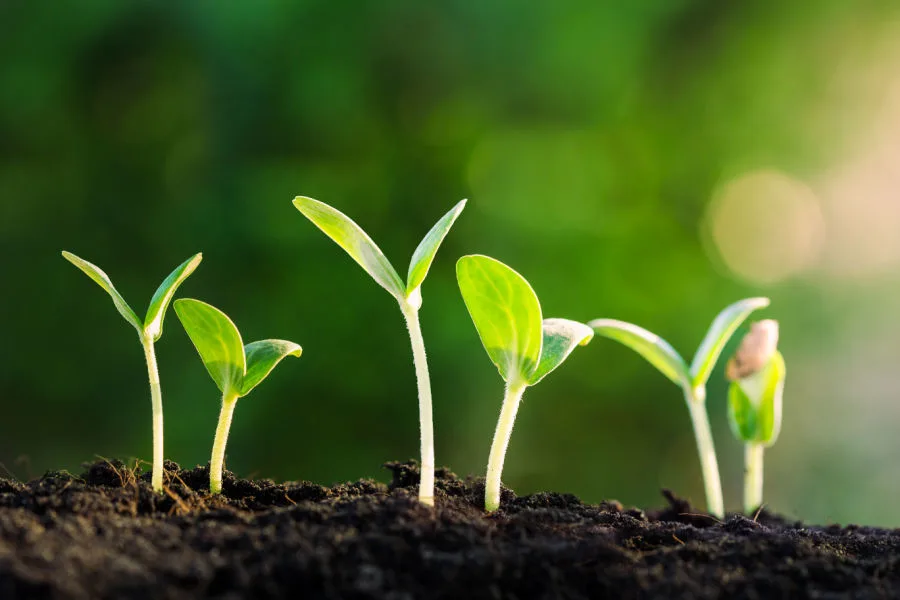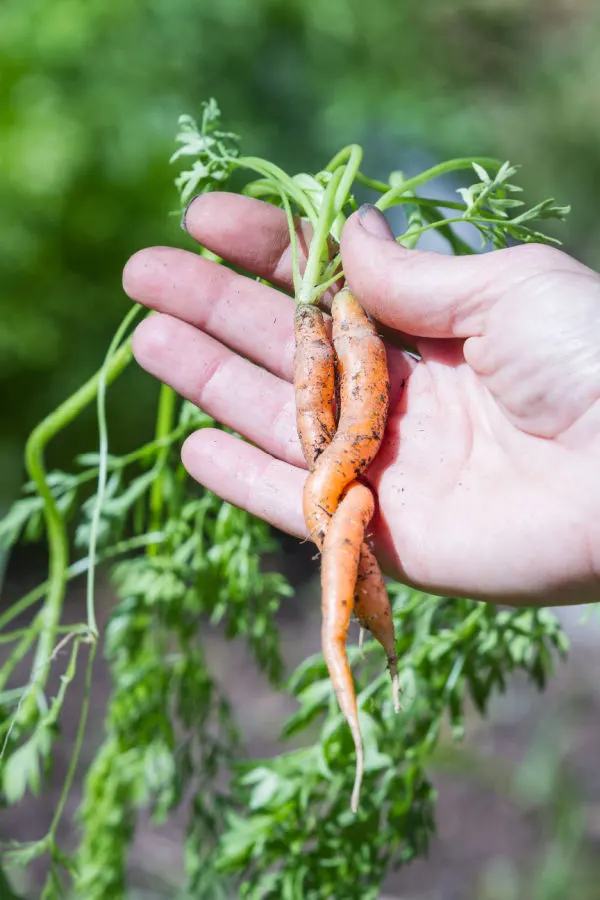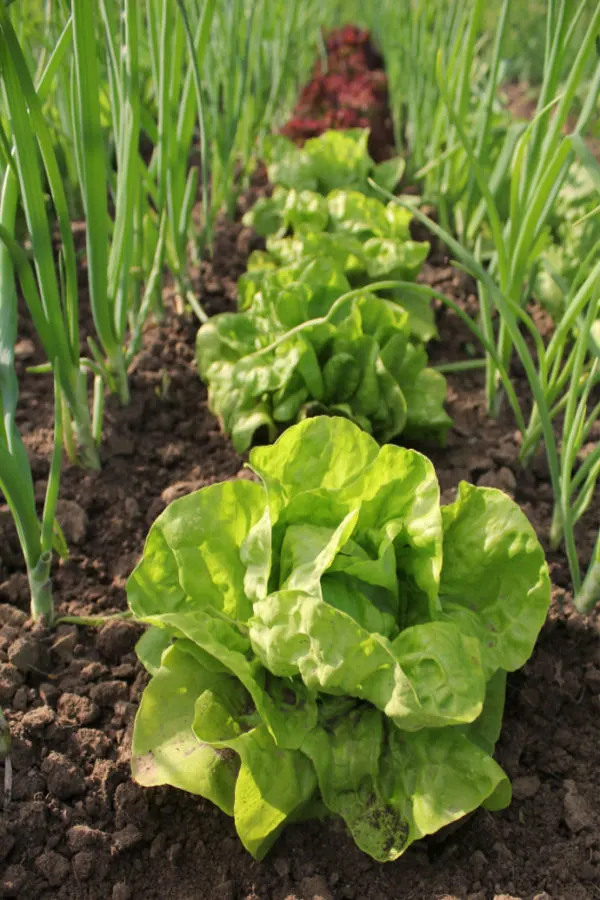Want to know how and when to thin seedlings from the seed crops you planted in your vegetable garden this year? And why it’s so important to do it?
If there is one simple task that is the most underrated and under-performed in the vegetable garden every year – it’s thinning seedlings from the rows of your seed crops. Not only is it vital in creating healthier plants – it also leads to bigger and more flavorful harvests. Especially when it is performed at the right time to give the remaining plants plenty of space to mature and develop.
For many gardeners, thinning is an extremely difficult chore to perform. Not because it is physically challenging, but because it is simply too hard to kill off an otherwise healthy plant that grew from a seed you just planted!

It would be wonderful for sure if every single seed you were to plant in your garden would sprout. But as any gardener knows, that is never the case. Because of that, when planting seed crops, it’s always a good idea to plant extra seeds in your rows to ensure enough can germinate for a good crop. But that doesn’t mean you can let every single seed that does sprout stick around!
How To Thin Seedlings
Thinning Seed Crops – The Why
Once all of the seeds in your rows germinate, it’s critical to head back in and start thinning. Thinning over-populated seedlings is vital to give remaining plants the space and nutrients they need.
When too many plants remain in the soil, they begin to compete with one another for valuable resources. Resources such as water, light, and the minerals and nutrients they need to develop. Plants that grow too close also make it easy for pests to find a protective home in the lush overgrowth. If all that wasn’t enough, all of that thick growth can also make it easy for mold and disease to find a home as well.
But perhaps most important of all, thinning gives remaining plants the space they need to grow and mature to full size – without issue. Seeds that grow to close to each other don’t just crowd out one another, sometimes they actually grow together.

For soil crops such as carrots, radishes and onions, it can spell disaster. When plants grow too close, they often meld together under the soil. And when they do, they create a highly unattractive and usually inedible vegetable.
Carrot seedlings that grow too close are notorious for this. Without thinning, an entire crop can be ruined because the roots intertwine. When it comes time for harvesting, it can be quite depressing to pull up what looks like healthy top growth, only to find a twisted mass of a vegetable underneath that is impossible to eat. See: How To Grow Straight Carrots
How and When To Thin – Thinning Seedlings In The Garden
Knowing when to thin your young vegetable seedlings is just as important for success. If you wait too long, it can not only make the chore much more difficult, but it can also begin to damage the remaining plants as well.
The longer you allow seedlings to grow, the more likely their roots will intertwine under the soil. And once that happens, it becomes extremely easy to pull not just the plant you are trying to eliminate up, but the one you are trying to save along with it.
It is best to thin seed crops early, within a few days of sprouting. The faster you remove plants that are too close together, the easier it will be. In loose soil, most tender seedlings can be easily popped from the earth with little effort or worry of damaging nearby plants.

When pulling seedlings, one little trick to help is to first lightly mist the soil before thinning. This allows for the removal of seedlings without disturbing any surrounding soil – which of course is great for the remaining plants.
And if your seedlings do get a little too big and you begin to pull up additional plants with them, you can also use pruning snips or a small pair of garden shears to do the job. It can take a little more time, but by just snipping off the extra plant at the surface of the soil, the surrounding soil and plants are left undisturbed.
Spacing Seed Crops For Success – Thinning Seedlings
So how much space do you need to leave between crops? That all depends on what you are growing. And the best way to find out this vital information is right on the back of your seed packet.
Nearly all seed packets print spacing requirements on the back of their packaging. If you did happen to throw your packages out after planting, you can often find the information on the seed company’s website as well.
But as a general rule of thumb, here is a quick look at some of the more common seed crops in the garden, and how far part each plant should be left after thinning.
Quick Reference Spacing Chart
- Beets – 1 to 2 inches apart
- Carrots – 1 to 2 inches apart
- Cucumbers – thin to 2 plants per mound, 8 inches apart
- Green Beans – 2 to 3 inches apart
- Kale – 8 to 12 inches apart
- Lettuce (Head) – 12 inches apart
- Lettuce (Loose Leaf) – 2 to 3 inches apart
- Onions – 4 to 6 inches apart
- Peas – 3 to 6 inches apart
- Radishes – 1 to 2 inches apart
- Spinach – 2 to 3 inches apart
- Sweet Corn – 10 to 12 inches apart
- Turnips – 2 to 4 inches apart
Although the process of thinning can be a bit difficult when it comes to killing off perfectly good seedlings, remember that in the long run, the remaining plants will actually produce a bigger overall harvest than if you let all of the plants remain.

Here is to thinning your vegetable garden seedlings this year, and to giving your plants the best chance of success!
Follow Our Facebook Page For Great Gardening Tips And Advice! This Is My Garden Facebook Page
This Is My Garden is a garden website created by gardeners, for gardeners. Jim and Mary Competti have been writing gardening, DIY and recipe articles and books and speaking for over 15 years from their 46 acre Ohio farm. They publish three articles every week, 52 weeks a year. Sign up today to follow via email, or follow along!
